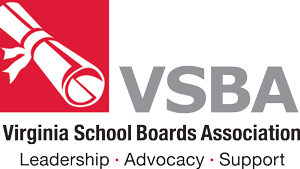During board training, we often discuss the phrase “agree to disagree, agreeably,” but what exactly does that mean? School boards are in the unique position to make important decisions that affect all aspects of the school division and many pieces of the broader community. School board members may not always agree on how to make these important decisions and the way in which you disagree matters.
Each school board member brings a diversity of thoughts, experiences, and values to the board room. These differences allow for a multifaceted view of issues and situations, and for structured debate on solutions to problems. Boards are not meant to agree on everything put before them at all times- otherwise, what would be the need for more than one board member? Everyone comes to the board table with different perspectives and different experiences. The key though, is how the board responds to disagreements and differences of opinion.
The idea of disagreeing agreeably is not a new concept. For years, individuals have had disagreements on many issues, it just seems that in the current era, these disagreements have turned disagreeable. It is always important to remember that there is a human sitting next to you in the boardroom. They may come from a different set of values or beliefs than you do or have different areas of expertise than you do- but neither of these mean that you cannot come to an agreement for the betterment of the students in your school division. If an agreement cannot be made, the disagreement should remain respectful.
The school board and its members are leaders within your communities. Your conduct in the boardroom sets the tone for the entire community. Ensuring that your board disagrees agreeably, serves as a powerful example for your students, teachers, and community. By modeling respectful disagreement, civility, and openness to collaboration you can instill the values of civic discourse and cooperation throughout the community. Discussions and decisions do not always have to be one side versus the other, there are opportunities to meet in the middle for almost any situation.
When you find yourself in a situation that might not be agreeable, take a step back. Remove yourself from the discussion or debate and take a moment to look at all sides. Try your best to remove emotion and look at the issue at hand. Is there an opportunity for collaboration or adjustment? During a school board meeting that I recently observed, the board was discussing the proposed budget. The Superintendent presented four options on a particular situation and there was very little agreement on any of the options. I witnessed one board member take a step back (proverbial of course, as everyone was sitting), and suggest a fifth option. The Superintendent and finance staff agreed that the fifth option would be viable. It was amazing to watch each of the board members decide that maybe their number one priority was not included in option five, but they could work with that compromise. This all happened in a matter of minutes and completely shifted the conversation and the tone of the boardroom.
I challenge you to embrace the idea of disagreeing agreeably. Approach board debates and deliberations with an open mind and a commitment of mutual respect and collaboration. You are setting an example for your community and for your students that civility and respect are possible, even through disagreement.
